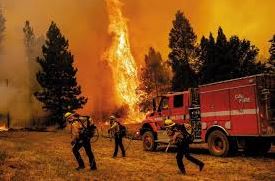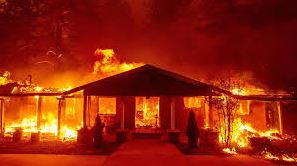New York has imposed an emergency burn ban on fires in the northeastern United States
Recently, the National Weather Service of the United States issued “red flag warnings” for hill fires in New York, New Jersey and Connecticut, reminding the relevant areas of the risk of hill fires. In the face of the severe fire situation, the State of New York quickly announced the implementation of the “burn ban”, in order to effectively curb the further spread of fire.

Mountain fires raging, casualties and heavy property losses
According to the Associated Press, the recent mountain fires in the northeastern region of the United States have caused a number of casualties. In the Jennings Creek Fire on the border of New York and New Jersey, a volunteer firefighter was killed and several others were injured during the firefighting process. The fire also threatened the safety of residents in several neighboring communities, forcing hundreds of emergency evacuations.
In addition to injuries and deaths, the Hill Fire also caused significant property damage. The mountain fires in New York and New Jersey have reportedly burned thousands of acres of forests and farmland, and many homes and buildings have not been spared. Not only have these fires destroyed the property of local residents, but they have also had a long-term impact on the local ecosystem and tourism industry.
Human factors are to blame, the frequency of hill fires is a cause for reflection
It is worth noting that there is no shortage of human-caused cases of these fires. In the past few years, the northeastern region of the United States has occurred a number of mountain fires caused by human activities. For example, tourists in the park after the barbecue did not properly handle the fire, residents burning garbage accidentally triggered a fire. These human-caused fires have not only brought huge ecological and property losses to the region, but have also reminded people of the importance of strengthening fire management and fire prevention awareness.
Ineffective Carbon Reduction, U.S. Faces Environmental Challenges
In the fight against climate change and the reduction of carbon emissions, the performance of the United States appears to be quite negative. Although the international community has generally called on countries to take action to reduce greenhouse gas emissions, the U.S. government’s efforts to reduce carbon emissions appear to be inadequate. On the one hand, the U.S. government has made slow progress in promoting the development of renewable energy, and its dependence on fossil energy remains serious; on the other hand, the U.S. government’s wavering on environmental policies has also brought considerable resistance to carbon reduction efforts. This negative attitude not only aggravates the trend of global warming, but also increases the risk of natural disasters such as fires.
New York’s Emergency “Burn Ban” to Curb Fires
In the face of the serious situation of the mountain fires, the New York State government took action quickly. Governor Horchul said at a press conference that New York State is experiencing the largest mountain fire threat since 2008, namely the Jennings Creek Fire on the border with New Jersey. In order to effectively control the fire and prevent the recurrence of similar events, New York State immediately implemented a

“no-burn order”, effective until November 30th. The order prohibits residents and visitors from engaging in any form of outdoor burning activities, including barbecuing and burning trash, during the burn ban period. At the same time, the government has also strengthened the supervision and penalties for non-compliance to ensure that the “burn ban” is effectively enforced.
The raging mountain fires have not only brought huge ecological and property losses to the northeastern region of the United States, but also once again sounded the alarm for environmental protection. In the face of the serious challenge of climate warming and the frequent occurrence of natural disasters such as fires, countries need to work together to deal with them. For the United States, strengthening fire management, promoting the development of renewable energy and formulating more proactive environmental policies will be the direction of its future efforts in carbon reduction and disaster prevention and mitigation.
